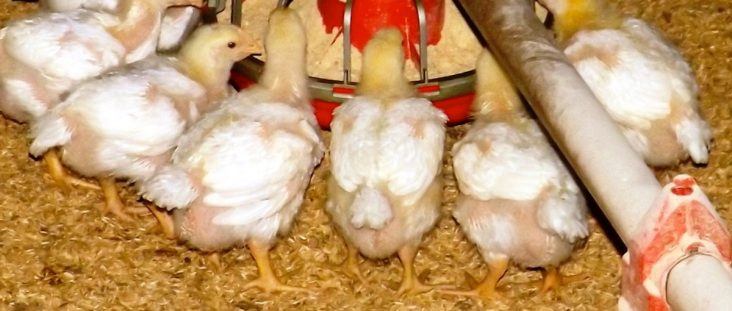Increased supply to lower chicken prices, Tyson Foods likely to avoid impact
by January 4, 2018 12:15 pm 1,148 views

The poultry industry enjoyed a profitable 2017, but profits could be harder to come by in 2018 according to Jefferies analyst Akshay Jagdale who said chicken prices could drop 10% thanks to increased supplies.
Jagdale said his model of the supply chain for poultry indicates a 4% uptick in chicken production this year, double the 2% growth forecast by U.S. Department of Agriculture.
He said Wall Street is underestimating the size of the breed flock and to a lesser extent, its productivity. In a note to investors Jagdale wrote,” Too many chickens in 2018.” He said excess supply is likely to pressure prices anywhere from 3% to 10% lower than last year. Jagdale said such a price decline would present significant downside for Pilgrim’s and Sanderson Farms. Tyson Foods is not at the same risk given the company benefits from lower prices in its buy-versus-grow program.
Jagdale said the majority of poultry processors could see lower margins if prices come down as expected. He lowered his price target for Pilgrim’s to $28 from $32 and maintained a “hold” rating. He also lowered the target on Sanderson Farms to $77 from $85. Jagdale gives Sanderson Farms an “underperform” rating and has lowered his price target three times over the past year. On the flip side he is bullish on Tyson Foods with a target price of $85 and a “buy” rating as of Oct. 30.
Chicken stocks are already building up in cold storage according to a Dec. 28 USDA report. Chicken supplies in the freezer remain heavy. The total supply of whole broilers and broiler parts was 897.4 million pounds, 13.5 % higher than a year ago and 20.4% higher than the five year average. Wing and leg quarter inventories are lower than last year but breast meat inventories remain burdensome and there are notably more “other” chicken parts currently stored away, the report notes.
Turkey inventories at the end of November were 289.3 million pounds, 22% higher than a year ago. Breast meat inventories declined once again in November but still remain 16% above year ago levels. Whole bird stocks are 58% higher than last year.
The cold storage report also indicates beef supplies rose 2.2% in November, but pork supplies are down year-over-year heading into the spring.
The USDA also reported this week meat and poultry consumption per capita is on the rise in 2018. The average consumer is expected to eat 222.2 pounds of red meat and poultry this year, which surpasses the record set in 2004. Cheap grain costs are fueling increased domestic production which is forecast to surpass 100 billion pounds for the first time in history.
David Portalatin, an analyst with NPD Group, said protein tops the list of what consumers want to add to their diets and that’s good news for meat companies like Tyson Foods. He also said chicken prices are falling amid the supply surplus. In November, breast meat prices reached their lowest price in five years with more room to fall, he said.
Wall Street has absorbed the recent news of excess chicken supplies and there has been a slight pullback in poultry company stock prices this week. Tyson Foods (NYSE: TSN) closed Wednesday (Jan. 3) at $79.71, down 1.13%. Over the past week Tyson shares are down 3.1%.
Pilgrim’s (NASDAQ: PPC) shares closed Wednesday (Jan. 3) at $29.21, down 1.56%. Over the past five days shares are down 5.68%. Sanderson Farms (NASDAQ: SAFM) shares bounced back on Wednesday after tumbling 5% during the past week. Sanderson shares closed Wednesday at $133.89, up 2 cents. Sanderson shares have lost 22% of their value over the past month.
